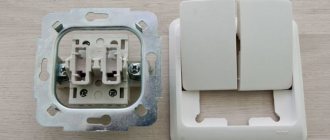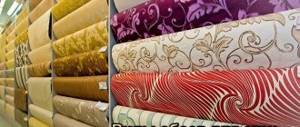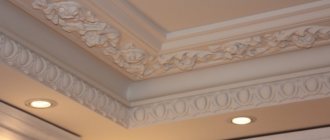SMD – surface mounted device – a device mounted on a surface. A lot of different electronic components are now produced in SMD version. It's not just LEDs. Basically all electronics use surface mount boards. Electronic components are mounted on the surface of the board. Their leads do not pass through through holes, but are soldered to the pads. In industrial production, refractory solders can be used. Lead-free solders are sometimes used.
Contents
LED markings.
Such SMD LEDs are marked with four numbers. The first pair is length, the second is width. In each pair, the first number is an integer in mm, the second number is tenths of a millimeter. LED 5050 – has dimensions of 5 by 5 mm. 3528 – dimensions 3.5 mm by 2.8 mm. The marking does not provide additional information. Detailed characteristics are described in the accompanying documentation for the batch of devices. Familiarization with the accompanying documentation is very important, since the manufacturer can place a crystal of different power in the same package. As a result, instead of a one-watt light source, there is a chance to get an illuminator that is an order of magnitude weaker.
What are SMD 3528 and SMD 5050 LEDs?
Here is a simple and clear comparison between LED chip numbers and sizes.
Different numbers correlate with different physical dimensions of the chip. The numbers 5050, 3528, 2835, etc. correlate the LED sizes in millimeters. Some LEDs are brighter than others, and some produce more light per watt. The LED chip you need will depend on your project. Read below for more information.
Technical characteristics of SMD LEDs.
In most cases, there is a relationship between size and characteristics. However, if we are talking about “Chinese crafts” the situation may be radically different.
The main characteristics are:
- power;
- rated current;
- standard size;
- flow;
- angle of light propagation;
- glow color;
- working temperature;
- number of crystals in a single package.
SMD 3528 technical specifications.
The diode body is mounted on the contact pads of the board. Can be used in a wide temperature range. The case can contain either one or three crystals. There are also crystals that emit different colors (RGB). Manufactured by: Samsung, LG, Philips. Chinese versions are of worse quality, the brightness is much lower. The originals have a copper base. Since copper dissipates heat better, the original smd led 3528 heats up less during operation. The documentation for the original light-emitting semiconductors complies with the LM80 standard. This means that the total number of hours of operation will not be indicated, but the number of hours until the luminous flux decreases to the eighty percent level. Well, accordingly, analogues and the original cannot cost the same. The analogue will be cheaper. The cathode (minus, negative terminal) is located on the cut side of the body.
SMD 5050 technical specifications.
It was this option that began to provide the necessary and sufficient luminous flux at small sizes. They are capable of delivering up to 80 Lm per 1 W of electricity consumed. Branded options have a low level of degradation. After 3000 hours, efficiency drops by no more than 4%. Attention! Counterfeits are very difficult to detect; they need to be connected. Non-originals have three times less brightness. Visually, a fake is almost impossible to recognize. The main parameters are shown in the table below.
SMD 5630 technical specifications.
On their basis, LED lamps with a power of up to 90 W are assembled. Produced by many companies. Cheap Chinese fakes have 3-4 times worse performance and are very sensitive to overheating. There is a simple rule regarding smd led 5630 and 5730. The lamp power is equal to the number of diodes multiplied by 0.15. So don't trust sellers.
SMD 5730 technical specifications.
This LED has dimensions slightly larger, by 0.1 mm. Formally, these are super-bright medium-power LEDs. Crystals of various powers are packed into this case. Visually there are practically no differences between them. Originals are produced only by well-known brands and cannot be found in inexpensive lamps. Dual-chip modifications with a power of 1 W are marked 5730-1. Models with an improved crystal provide up to 158 Lm/W.
SMD 2835 technical specifications.
According to the markings, the diode has linear dimensions of 2.8 mm by 3.5 mm. Manufactured on a ceramic substrate. The diode crystal is filled with a compound to protect it from external influences. Contacts for installation are on the reverse side. They also act as a heat sink.
Table. Specifications.
Lighting LED
These LEDs are used for indoor and street lighting as part of lanterns, car headlights, LED strips, etc. In this regard, they have high power, high radiation intensity, and are produced only in white color in surface-mount housings.
Typically two varieties are produced, differing in color temperature: cool white and warm white.
Since crystals emitting white light do not exist in nature, in the production of lighting LEDs they resort to various technologies for mixing three basic colors (RGB). The color temperature of the resulting white light depends on the way they are added.
One way to obtain a white glow is to coat the emitting crystal with three layers of phosphor, with each layer responsible for its own base color. Another method is to apply two layers of phosphor to a blue crystal.
Lighting SMD LED
Most lighting LEDs are also available in SMD packages. Unlike indicator lamps, they are characterized by greater power and are produced only in white color.
It is worth noting that some low-power LED lighting, for example the SMD 3528 mentioned above, can be used as indicator lights, so the division into types here is quite arbitrary.
The main areas of application of SMD are LED strips and lamps, portable lights, and vehicle headlights. At the same time, they produce fairly directional radiation (about 100⁰-130⁰), so when lighting large areas it is necessary to use a large number of these LEDs to uniformly illuminate the area.
Structurally, lighting SMDs are a phosphor-coated emitting crystal on a heat-removing substrate, usually copper or aluminum. There are both varieties with and without a lens.
COB LEDs
LEDs of the COB (Chip On Board) type have become widespread. Essentially, this is the integration of a large number (usually several dozen) of SMD crystals in one package, which are then coated with a phosphor.
The picture above shows for comparison a Cree SMD 5050 (left) and a COB matrix of 36 chips (right).
COBs are used for lighting only. Their luminous flux is an order of magnitude greater than that of single SMDs. However, it should be noted that these LEDs are not suitable for creating highly targeted radiation due to the large scattering angle of the light flux. At the same time, it will also not be possible to create completely non-directional radiation - the scattering angle of the LEDs is less than 180⁰.
It has been noticed that some people do not like the emission spectrum of SMD or COB LEDs. In addition, an insufficient number of LEDs when illuminating large areas leads to the fact that the illumination is discrete in nature, that is, strongly illuminated areas alternate with dimly illuminated ones. This must be taken into account when choosing LED lighting.
Filament LED
This type of LED is also currently used only for lighting. They are widely used as decorative lighting for rooms. The emission spectrum, unlike SMD and COB, is much more pleasant to the human eye and resembles the light of an incandescent lamp. At the same time, all the inherent advantages of LED are preserved: low power consumption and long service life.
This video shows a comparison between a 40 W incandescent decorative lamp and a 4 W Filament lamp:
Here you can see that with a power 10 times less, the luminous flux emitted by the Filament lamp is 3-4 times greater.
At the same time, the efficiency of Filament is even higher than that of the same SMDs - with the same power, the former allow you to obtain greater illumination. This is achieved through COG (Chip On Glass) technology, in which light-emitting crystals are mounted on a glass substrate and then coated with a phosphor.
The substrate itself has a cylindrical shape, which makes it possible to obtain a light flux scattering angle of 360⁰. That is, such LEDs are very good at creating non-directional radiation.
Connection requirements.
All lighting semiconductor devices, including SMD, require high-quality power supply. The current strength should not exceed the rated value. The most appropriate is to use an LED driver. It is sometimes called a power supply. These are not entirely accurate terms. The most correct is the current source. Unlike a stabilized voltage source, a current source keeps the current constant; the output voltage may differ. Exceeding the power rating for the diode leads to premature degradation and rapid failure - burnout.
Additionally, many LEDs require a heatsink to dissipate heat. Failure to comply with the temperature regime also leads to a decrease in resource.
Ensuring reliable power requires a quality connection. Before soldering smd led to the board, it is advisable to check the semiconductor, since a factory defect cannot be ruled out.
Checking and soldering SMD LEDs.
The simplest thing is to check the LED when connected to a power source. This way you can evaluate not only performance, but also quality. Wrong polarity won't cause any harm - it just won't light. With the correct polarity, the glow should be without flashes. If periodic flashes are observed, this indicates that the rated current value was exceeded, or there was overheating. This semiconductor is no longer suitable for use.
Checking the LED with power supply
You can also check the light-emitting diode using a multimeter. There should be much more resistance in one direction than in the opposite direction. If the tester shows low resistance in two directions, this means a breakdown; if the resistance is infinity, then it means a break. It is worth noting that there are now modern SMD models on the market with resistance in both directions of hundreds of kOhms. This is due to the fact that such SMD LEDs contain various transistors and semiconductor resistors.
Manual soldering of LEDs is required mainly during the repair process. High-quality soldering of LEDs is half the success of assembling a circuit. It should be borne in mind that overheating may not have a very good effect on the LED crystal, so it is very important to maintain the temperature. At a temperature of 200 C°, the SMD diode begins to deform, and at 230 C° it completely melts.
Replacement consists of several stages:
- dismantling a faulty smd led;
- site preparation;
- diode installation;
- soldering of leads;
- washing and sometimes applying a protective layer.
Some LEDs may have a heat sink - a substrate, which is also soldered to the board. This makes it difficult to dismantle the element. It is most convenient to dismantle a faulty LED using a soldering gun . In this case, it is advisable to use a nozzle with a small diameter. The air flow should be small and directed under the LED so as not to blow away neighboring elements and not to deform the light element itself. It is advisable to set the hair dryer temperature to 300 C°. Excess solder (if any) can be removed using braid.
Soldering requires flux and solder. Some people use an aspirin tablet as a flux. This absolutely cannot be done. Aspirin is an acid, and acid destroys solder joints. Solder paste can be used as solder. It consists of small balls of solder and flux. For convenience, it is advisable to fix the board.
Soldering can be done either with a soldering iron or with a hot air gun (a component of a soldering station). Solder paste is applied only to the contact pads; the entire board does not need to be coated. The LED in the correct polarity is installed at the soldering site using tweezers. The air flow is directed to the soldering area. It usually takes a few seconds for the LED to be securely soldered to the board. At the same time, the paste begins to melt. The flux evaporates quite quickly. The result is a high-quality connection between the diode leads and the contact pad. To protect against overheating, the housing of SMD components is covered with metal foil. Using an IR soldering station is similar.
Using a hot air gun for soldering
If you don’t have a hot air gun, you can use a soldering iron. However, this is not the best way. Large powers are not needed. 15-20 W is quite enough. It is very important that the soldering iron tip is not thick and is well tinned. If regular solder is used, soldering should be done quickly. It is convenient to use an alcohol solution of rosin as a flux. The soldering iron tip should only be applied to the contacts. Excess solder can be removed with a soldering iron; excess flux can be washed off with alcohol. It is better to use isopropanol.
Soldering an LED with a soldering iron
There are several recommendations:
- Use high quality solder and flux.
- Do not overheat the SMD LED housing. The heating time or contact time with the soldering iron should not exceed the minimum required.
- Limit the temperature to no more than 2600 C
What types of LEDs are there?
The very first LEDs were used as indicators and continue to be used in this area to this day. The most widely used are indicator LEDs, which are elements of output mounting. They have a rectangular or round lens and are found from the simplest devices to the most complex modern equipment. They are used not only for indication, but also as backlight.
The most characteristic representatives of this group have round convex lenses, the diameter of which ranges from 3 to 10 mm. However, the low current of these LEDs does not make it possible to obtain a large amount of light, making their use as lighting devices impractical. They are most suitable for devices such as tickers and light displays. They require little current and voltage and hardly heat up.
Indicator LEDs can be white or colored according to the standard color spectrum. Some designs are available in multi-color options. In this case, one lens is equipped with three transitions, and the lower part is equipped with four leads. Such elements are more functional, which makes it possible to create color LED displays.
With the development of technology, more modern bright LEDs began to be used in output mounting. The luminous intensity of these elements is much higher than that of indicator LEDs, so they have become widely used for flashlights.











